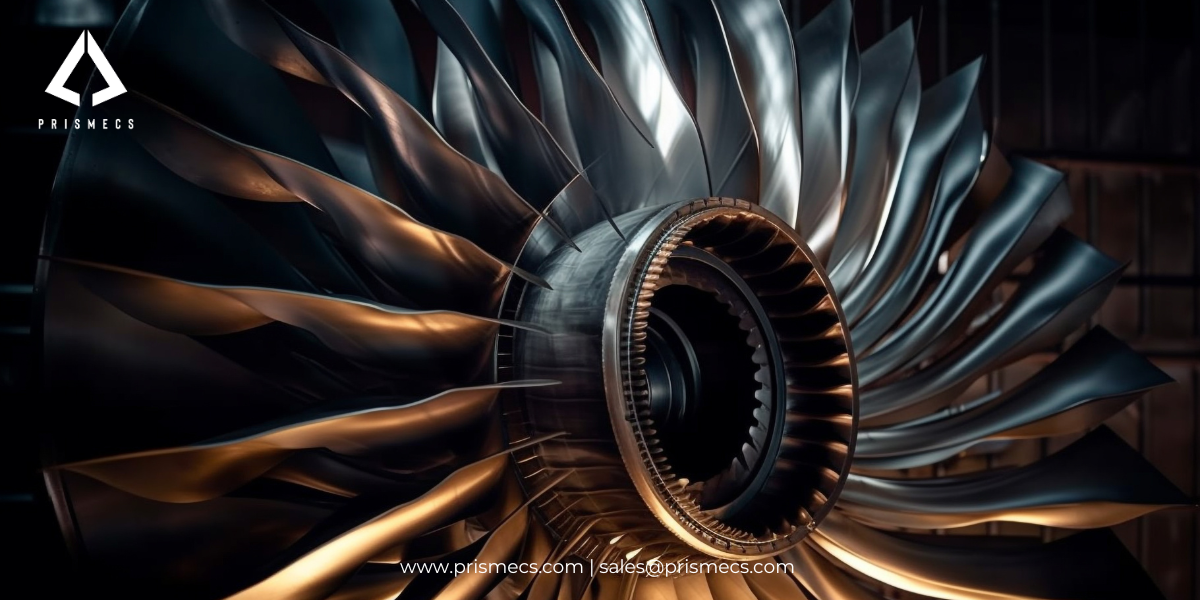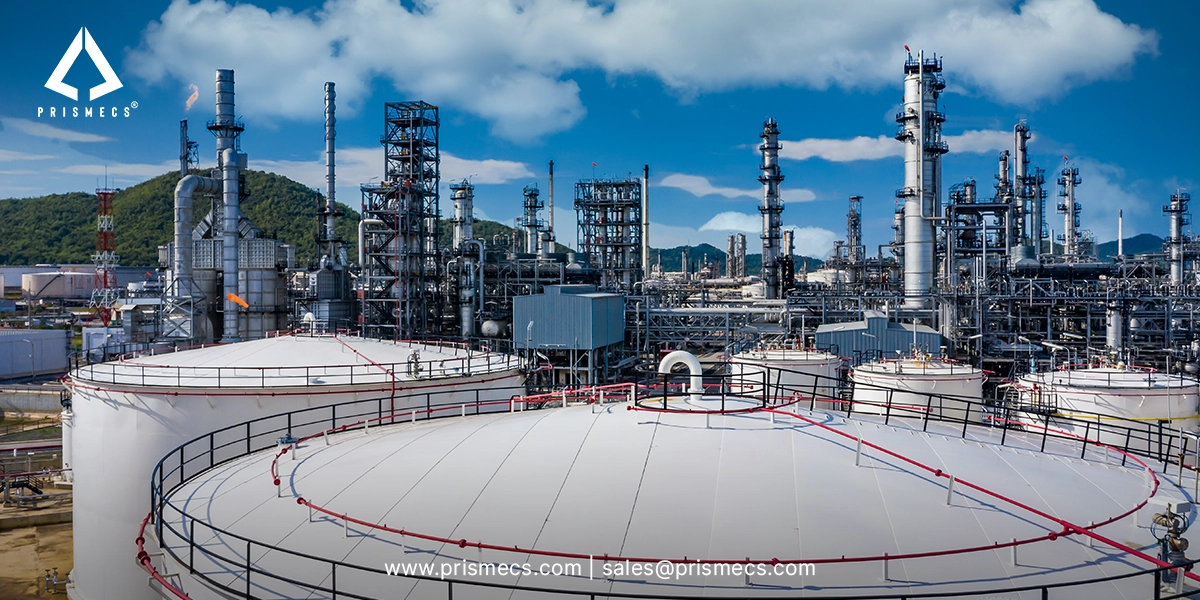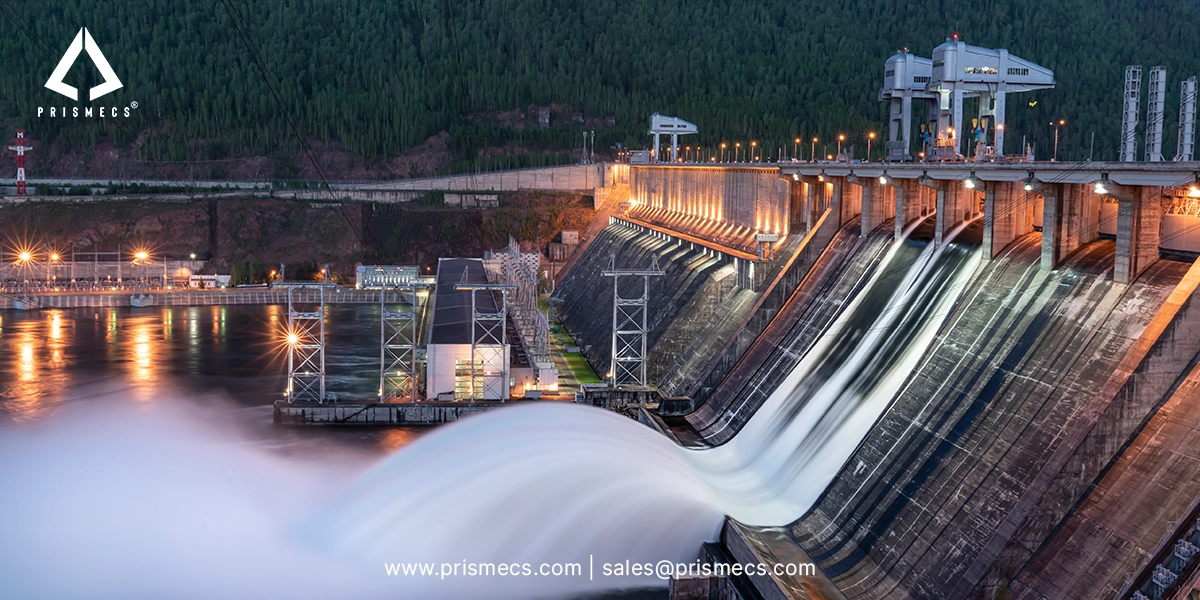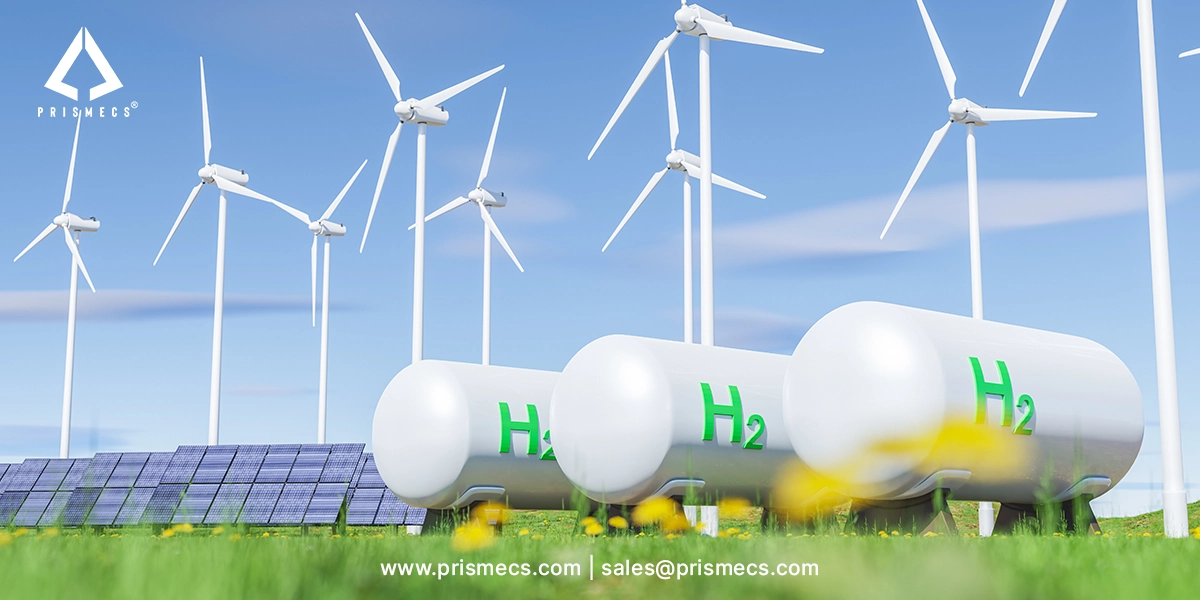
Gas turbines have long been fundamental to power generation and propulsion systems worldwide. A gas turbine in a power plant uses natural gas or liquid fuels to make mechanical energy. These complex machines, characterized by their high efficiency and reliability, are essential in various industries, including electricity generation, aviation, and industrial applications.
People have used gas turbines to produce power since 1939. They are one of the most popular power generation systems today. As the demand for cleaner and more efficient energy solutions grows, innovations in gas turbine technology have become crucial. This blog explores the latest advancements in technology, highlighting how these innovations are driving improved productivity.
The Evolution of Gas Turbine Technology
Gas turbines operate on the principle of converting chemical energy from fuel into mechanical energy through combustion. Machinery uses this mechanical energy to generate power for various purposes.
Since their inception, they have undergone significant transformations, from early experimental models to sophisticated machines capable of delivering high performance and efficiency.
Advanced Materials and Coatings
One important area of innovation in gas turbine technology is the improvement of materials and coatings. They operate under extreme conditions, with temperatures often exceeding 1500°C. Traditional materials cannot withstand such high temperatures without degrading, decreasing efficiency, and increasing maintenance costs.
Superalloys
Superalloys, made of nickel, can stay strong and stable at high temperatures, improving their performance. These materials make turbine parts last longer and work better at higher temperatures and pressures.
Thermal Barrier Coatings (TBCs)
To further protect turbine components from extreme heat, engineers apply thermal barrier coatings. TBCs are ceramic coatings that keep metal cooler and make it last longer. Innovations in TBCs, such as the development of advanced ceramic composites, have significantly improved their effectiveness, contributing to overall productivity.
Additive Manufacturing
Additive manufacturing, commonly known as 3D printing, transforms turbine production and maintenance. This technology enables the creation of complex, high-precision components that are difficult or impossible to manufacture using traditional methods.
Rapid Prototyping
Additive manufacturing allows for rapid prototyping, enabling engineers to quickly design, test, and refine turbine components. This accelerates the development process, leading to faster implementation of new designs and technologies.
On-Demand Part Production
The ability to produce parts on demand reduces the need for large inventories of spare parts and minimizes downtime. If a turbine part breaks, we can quickly make a new one to get the turbine working again faster than usual.
Complex Geometries
Additive manufacturing allows for components with complex geometries that optimize airflow and cooling within the turbine. These designs can improve efficiency and reduce thermal stress on the components, enhancing overall turbine performance.
Digital Twins and Predictive Maintenance
The integration of digital technologies into turbine operations has opened new avenues for improving productivity. One such innovation is the concept of digital twins and predictive maintenance.
Digital Twins
A digital twin is a virtual replica of a physical gas turbine that simulates its behavior under various conditions. By creating a digital twin, operators can monitor and analyze the turbine's performance in real-time. Operators can also identify potential issues before they become critical. This proactive approach to maintenance can prevent unexpected failures and extend the lifespan of turbine components.
Predictive Maintenance
Leveraging data from sensors and digital twins. Predictive maintenance algorithms can forecast when a turbine component is likely to fail. This approach schedules maintenance at optimal times, reducing downtime and maintenance costs. Predictive maintenance also helps maximize efficiency by ensuring they operate at peak performance levels.
Combustion Technology
Innovations in combustion technology are key in enhancing efficiency and reducing the environmental impact of gas turbines. Combustion is the core process in a turbine. This process burns fuel to generate high-temperature, high-pressure gases that power the turbine.
Low-NOx Combustors
Traditional combustion processes in turbines produce nitrogen oxides (NOx), which are harmful pollutants. Engineers have developed low-NOx combustors to minimize the formation of NOx by optimizing the combustion process. These combustors use advanced mixing techniques and lean-burn strategies to reduce emissions without compromising performance.
Hydrogen Combustion
As the world transitions to cleaner energy sources, hydrogen is emerging as a promising fuel for turbines. Hydrogen combustion produces only water vapor as a byproduct, eliminating CO2 emissions. Innovations in hydrogen combustion technology are enabling them to operate efficiently, contributing to a more sustainable energy landscape.
Aerodynamics and Blade Design
The aerodynamic design of turbine blades plays a crucial role in determining the efficiency and performance of gas turbines. Advances in aerodynamics and blade design have led to significant improvements in turbine productivity.
Advanced Blade Cooling
Extremely high temperatures expose turbine blades, necessitating efficient cooling mechanisms. Engineers have developed advanced blade cooling techniques. Such as film cooling and internal cooling channels, to maintain blade integrity and performance under extreme conditions. These cooling methods enhance the efficiency and lifespan of the blades.
3D Aerodynamic Design
The use of computational fluid dynamics (CFD) and 3D printing allows for aerodynamically optimized blade designs. These designs improve the flow of air and gases through the turbine, reducing energy losses and increasing overall efficiency.
Recommended Reading: The Best Gas Turbine Spare Parts Supplier
Integration of Renewable Energy
The integration of renewable energy sources is another area of innovation aimed at improving productivity and sustainability.
Hybrid Systems
Hybrid systems that combine gas turbines with renewable energy sources. Such as solar or wind power, offer enhanced flexibility and efficiency. These systems balance the variability of renewable energy.
Energy Storage Solutions
Integrating energy storage solutions with turbines can further enhance their productivity. Energy storage systems, such as batteries or thermal storage, can store excess energy generated during periods of low demand. They release this stored energy when demand is high. This ensures optimal utilization and improves overall system efficiency.
Compressed Air Energy Storage
Compressed air energy storage (CAES) systems can significantly enhance productivity. A CAES system compresses excess energy to store air in underground caverns or tanks.
When energy demand is high, the system releases compressed air. It typically heats it using natural gas before feeding it into a gas turbine engine. This process increases the turbine's efficiency by reducing the amount of fuel required to reach the necessary operating temperatures.
Exhaust Gas Recovery
Recovering and utilizing exhaust gases from gas turbines is a crucial innovation for improving overall efficiency and productivity. Waste heat recovery systems capture thermal energy from exhaust gases and convert it into additional mechanical or electrical energy.
Combined Heat and Power (CHP)
CHP systems use waste heat from exhaust gases to generate steam. This steam drives a steam turbine for additional power generation. This improves the efficiency of the power plant and reduces fuel consumption and emissions.
Organic Rankine Cycle (ORC)
The ORC is another technology that utilizes low-grade heat from exhaust gases. Organic fluids with lower boiling points than water convert waste heat into mechanical energy, which can then generate electricity. ORC systems are particularly effective in enhancing the efficiency of small to medium-sized turbines.
Conclusive Remarks
The continuous advancements in gas turbine technology are driving significant improvements in productivity, efficiency, and sustainability. Innovations in materials, manufacturing processes, digital technologies, combustion methods, aerodynamics, and integration with renewable energy sources are transforming the landscape of industrial operations.
Partner with Prismecs for Improved Gas Turbine Productivity
With a deep commitment to enhancing efficiency, reducing emissions, and integrating renewable energy sources, we provide the expertise and innovative tools necessary to elevate your turbine operations to new heights.
Partner with Prismecs to unlock the full potential of your gas turbines, ensuring your power generation and propulsion systems remain efficient, reliable, and ahead of the curve. To avail of our services, you can call us at +1 (888) 774-7632 or send us an email at sales@prismecs.com.
Frequently Asked Questions (FAQs)
Q1. What are gas turbines, and where are they commonly used?
Ans: Gas turbines are a type of internal combustion engine that converts natural gas or other liquid fuels into mechanical energy. This energy is then used to generate electricity. They are commonly used in power plants, aviation, and the oil and gas industry.
Q2. Why is improving gas turbine productivity important?
Ans: Improving gas turbine productivity is crucial for enhancing energy efficiency, reducing operational costs, and minimizing environmental impact.
Q3. What are some recent innovations in gas turbine technology?
Ans: Recent innovations include advanced materials and coatings, additive manufacturing (3D printing), improved aerodynamics, enhanced cooling techniques, and digital twin technology.
Q4. How do advanced materials and coatings improve gas turbine performance?
Ans: Advanced materials, such as ceramic matrix composites (CMCs), and specialized coatings help turbines withstand higher temperatures and corrosive environments.
Q5. Can you explain the significance of improved aerodynamics in gas turbines?
Ans: Improved aerodynamics in gas turbines reduce aerodynamic losses and enhance the efficiency of air and gas flow through the turbine. This results in higher pressure ratios, better fuel efficiency, and increased power output.
Tags: gas turbine gas turbine operates turbine blade power generation power producing
recent posts

Petrochemicals
6 minutes read
Petrochemical EPC Services for Complex Plant Projects
Complete complex petrochemical projects with expert EPC services. Prismecs ensures safety, compliance, and on-time delivery. Partner with us today.

Renewables
5 minutes read
How Renewable Energy Systems Work Efficiently
Maximize efficiency with Prismecs’ renewable energy systems. Scalable, reliable solutions help industries cut costs, reduce emissions, and achieve sus...

I and C Services
7 minutes read
Expert Commissioning Services for Safe, Efficient Operations
Ensure safe, efficient energy operations with Prismecs commissioning services. Optimize energy systems, improve reliability, and reduce operational ri...

Green Hydrogen
7 minutes read
Green Hydrogen Plant Technology Guide
Discover how green hydrogen plants deliver zero-carbon energy. Prismecs guides scalable production, storage, and renewable integration. Act now for cl...